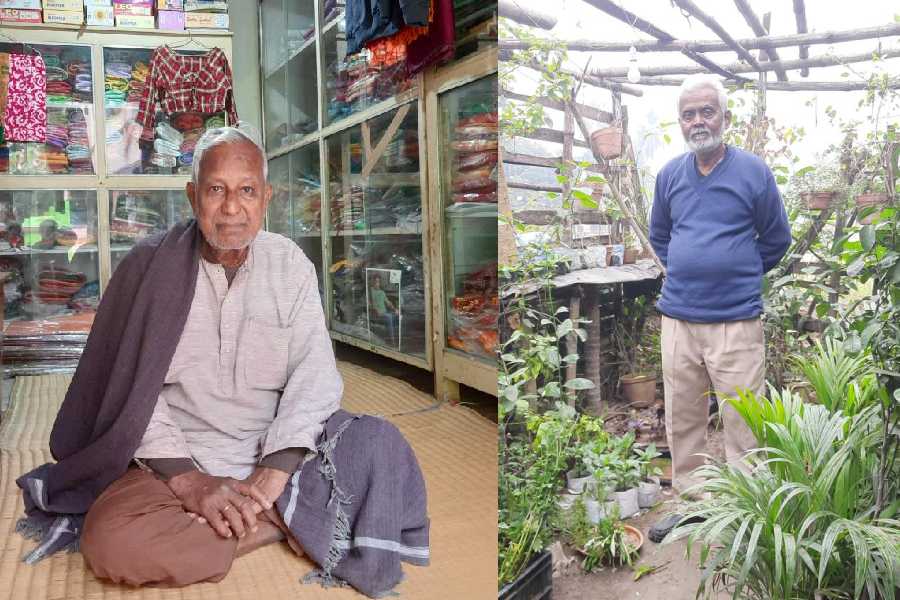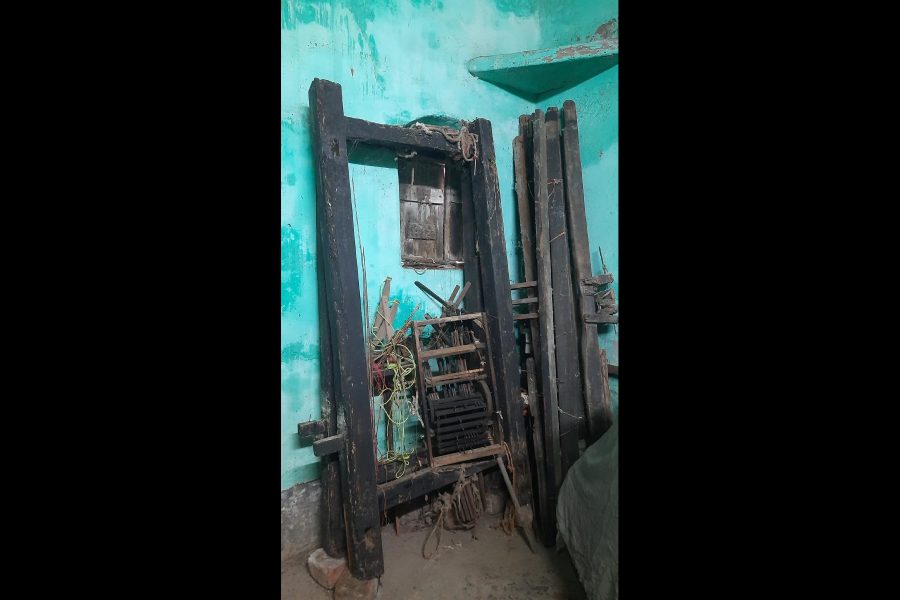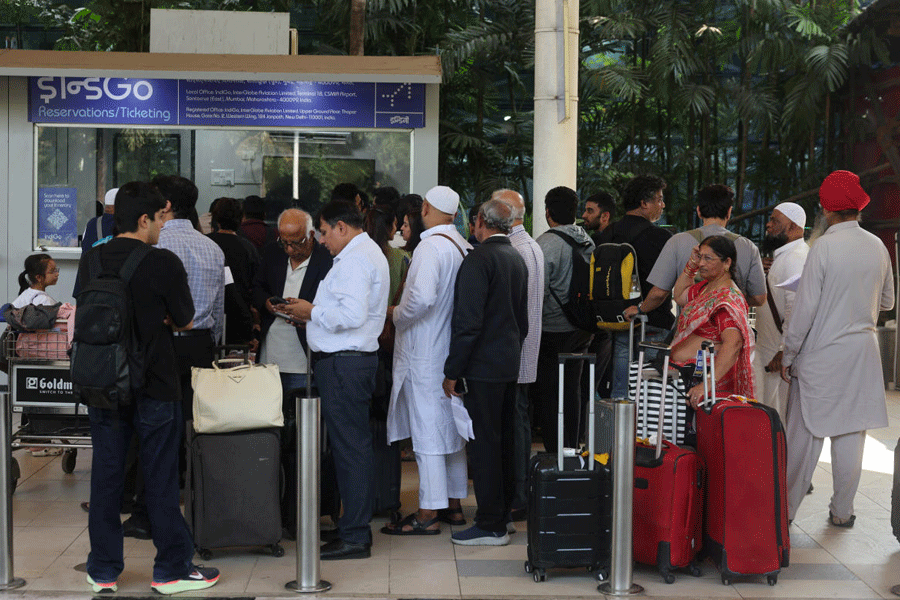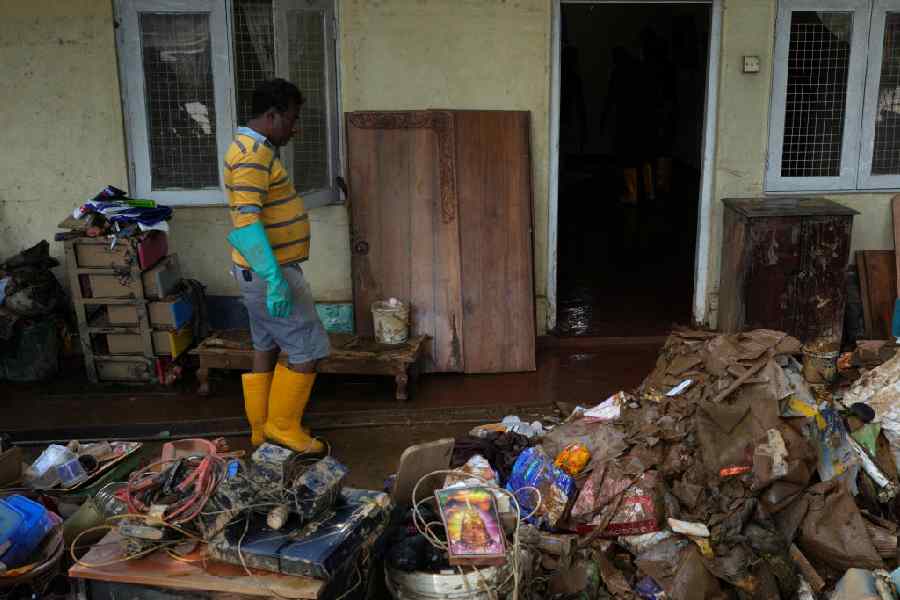Chandernagore, formerly known as Farashdanga, was once popular for its handloom industry, which produced fine dhotis, a traditional attire sought after across Bengal and nationally.
However, over time, the legacy has succumbed to economic and social changes.
Tarun Dey, 58, who comes from a family of handloom weavers, now runs a small nursery for livelihood at Bhakunda in Chandernagore. Tarun has seen the boom and lived through the industry's decline.
“My father, Ramprasad Dey, introduced the noksha-paar design in dhotis,” he said.
“Earlier, there was only kala-paar. The dhotis from Chandernagore were a big draw in the market during the middle of the last century,” said Tarun who migrated to Chandernagore from Atpur over 50 years ago and became part of the vibrant weaving community.
The decline began during the 80s when weavers’ wages failed to keep pace with the rising cost of living. “During that time, women replaced men in weaving, but the pay was pitifully low,” said Tarun.
Womenfolk have always played a huge role in the cottage industry. Author Harihar Seth in his Chandannagarer Sonkhipto Porichoy compiled information about these women weavers.

Dilip Laha at his garment store (left); Tarun Dey at his nursery
Seth writes in his book: “Here, threads were spun using spinning wheels. Many impoverished women earned their livelihood spinning threads. In most cases, women from the weavers' households were engaged in the work.”
But Tarun has another picture to offer.
“Towards the end of the last century, for over eight hours of work a day, a woman would earn a mere ₹12, whereas attending to patients as caregivers could fetch them at least ₹85.”
Such disparity in earnings drove women weavers to quit handloom jobs and move to professions that gave them better pay.
In Sumanta Banerjee’s A Tale of Two Cities Under Colonial Rule: Chandernagore and Calcutta, the author writes a popular rhyme on Chandernagore’s dhoti and translates it: “If you want to be a grandee, go to Farashdanga. Give up your scarlet-bordered dhoti and take the black-bordered one. But if you choose a dhoti stripped of all such frills, lakhs of women will desert their husbands to fall for you…”
Dilip Laha, 84, who once owned 15 handlooms in Chandernagore, recalled the popularity and demand of the dhotis produced in the former French colony.
“In the 1960s, weavers from Begumpur and Midnapore would come to Chandernagore because the pay was good. They stayed here on rent, earned enough to sustain themselves, and even sent money back to their families.”
But those days are over as Laha has another perspective to share for the decline.
“Over time, the process of applying starch to cotton threads, a vital part of the weaving, became expensive and time-consuming. Eventually, many switched to mill jobs,” he said.
Laha now runs a cloth store, but dhotis are no longer part of his inventory. “The final death knell for dhotis was men's shift to modern attire like shirts and trousers,” he said.
In addition to the shift in fashion, mushrooming power looms further accelerated the dhoti industry’s decline. The mechanised production of textiles provided cheaper alternatives, making handwoven dhotis a luxury item.
Debasish Kundu, 58, another former handloom worker at Gopalbagh in the town, recalled the physical exertion required to operate a loom. Kundu, who once owned 10 looms, eventually dismantled them, converting the wood into door and window frames. One of his looms is now installed in the Chandannagar Museum as a relic of the past.
“Earlier, schoolteachers and dignitaries used to wear dhotis. Now, it’s rare to see anyone wearing the traditional attire,” he said.
Tapan Kumar Amin, a septuagenarian resident of Chandernagor, echoed Kundu.
“I still remember the days when dhoti-clad men would walk the streets of Chandernagor with grace. It was a symbol of our heritage. Now, shirts and trousers have taken over. The dhoti has disappeared and with it a piece of our identity.”











